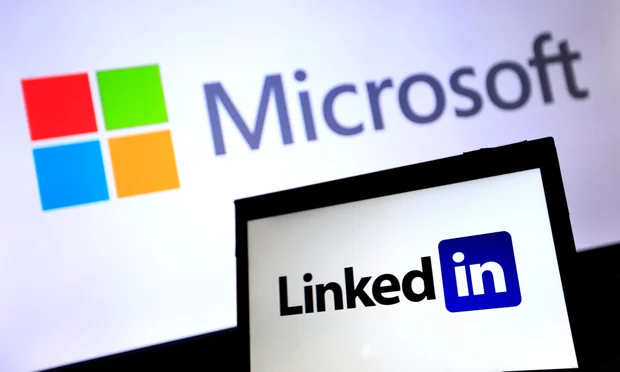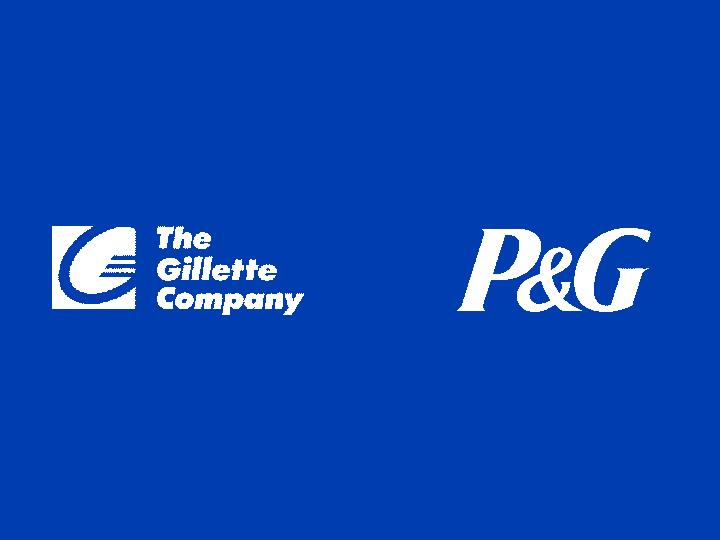
|
Listen to this article.
Getting your Trinity Audio player ready...
|

Why do companies pursue mergers and acquisitions?
Mergers and acquisitions (M&A) have become a popular strategy for companies seeking to accelerate their growth, expand their market share, and gain a competitive advantage. One of the primary reasons companies pursue M&A is to achieve economies of scale. By combining resources, operations, and customer bases, companies can often reduce costs, streamline processes, and improve operational efficiency. This can lead to increased profitability and a stronger market position.
Another key driver of M&A is the desire to diversify and enter new markets. Companies may acquire competitors or complementary businesses to expand their product or service offerings, tap into new customer segments, or gain access to new geographical regions. This diversification can help mitigate risk and provide opportunities for cross-selling and synergies.
Mergers and acquisitions can also be a strategic response to industry consolidation or disruption. By acquiring or merging with competitors, companies can gain a larger market share, eliminate redundancies, and enhance their negotiating power with suppliers, customers, and partners. This can be particularly important in industries undergoing rapid technological changes or facing intense competition.

Types of mergers and acquisitions
Mergers and acquisitions can take various forms, each with its own unique characteristics and implications. The most common types include:
- Horizontal mergers: These occur when two companies operating in the same industry and offering similar products or services combine. The goal is often to increase market share, eliminate competition, and achieve economies of scale.
- Vertical mergers: In this type of merger, a company acquires a supplier, distributor, or customer, integrating the supply chain and potentially gaining more control over the production or distribution process.
- Conglomerate mergers: These involve the combination of companies operating in unrelated industries, often to diversify the business portfolio and spread risk.
- Leveraged buyouts (LBOs): In an LBO, a company is acquired using a significant amount of debt financing, with the acquired company’s assets used as collateral. This strategy can be employed by private equity firms or management teams seeking to take a public company private.
Each type of merger or acquisition has its own set of challenges and opportunities, and the success of the transaction often depends on the strategic fit, integration planning, and execution capabilities of the parties involved.

Key steps in the mergers and acquisitions process
The mergers and acquisitions process typically involves several key steps, each requiring careful planning and execution:
- Identifying and evaluating potential targets: This involves conducting market research, analysing industry trends, and assessing the strategic fit between the acquiring and target companies.
- Conducting due diligence: The acquiring company will thoroughly investigate the target’s financial, operational, legal, and cultural aspects to uncover any potential risks or issues.
- Valuation and pricing: Determining the fair value of the target company is crucial for negotiating a favourable deal. Various valuation methods, such as discounted cash flow analysis and comparable company analysis, are commonly used.
- Negotiating and structuring the deal: This phase involves negotiating the terms of the transaction, including the purchase price, payment structure, and any necessary legal or regulatory approvals.
- Securing financing: Depending on the size and complexity of the deal, the acquiring company may need to secure financing through debt, equity, or a combination of both.
- Integration planning and execution: Once the deal is closed, the acquiring and target companies must work together to integrate their operations, cultures, and systems to realise the anticipated synergies and benefits.
Effective communication, change management, and a well-defined integration strategy are crucial for ensuring a smooth transition and maximising the value of the merger or acquisition.

Due diligence in mergers and acquisitions
Conducting thorough due diligence is a critical step in the mergers and acquisitions process, as it helps the acquiring company identify and mitigate potential risks associated with the target company. The due diligence process typically involves a comprehensive review of the target’s financial, operational, legal, and strategic aspects.
- Financial due diligence: This involves a deep dive into the target’s financial statements, accounting practices, tax liabilities, and overall financial health. The acquiring company will scrutinise the target’s revenue streams, expenses, cash flow, and debt levels to ensure the financial projections are accurate and achievable.
- Operational due diligence: The acquiring company will assess the target’s operational efficiency, production capabilities, supply chain management, and technology infrastructure. This helps identify any potential bottlenecks, inefficiencies, or areas for improvement that could impact the combined entity’s performance.
- Legal and regulatory due diligence: The acquiring company will review the target’s legal and regulatory compliance, including contracts, intellectual property, litigation, and regulatory requirements. This ensures that there are no hidden liabilities or legal issues that could jeopardise the transaction.
- Strategic and market due diligence: This involves analysing the target’s competitive position, market share, customer base, and industry trends. The acquiring company will assess the strategic fit between the two organisations and the potential synergies that can be achieved through the merger or acquisition.
Thorough due diligence not only helps the acquiring company make an informed decision but also lays the groundwork for a successful integration process by identifying potential challenges and opportunities early on.

Valuation methods for mergers and acquisitions
Determining the fair value of a target company is a critical step in the mergers and acquisitions process, as it sets the foundation for the negotiation and pricing of the deal. There are several valuation methods that acquirers can use, each with its own strengths and limitations:
Discounted Cash Flow (DCF) Analysis: This method involves projecting the target company’s future cash flows and discounting them to present value using an appropriate discount rate. The DCF approach focuses on the intrinsic value of the business and is particularly useful for companies with a stable and predictable cash flow.
Comparable Company Analysis: This approach compares the target company’s financial and operational metrics (such as revenue, EBITDA, or profit margins) to those of similar publicly traded companies. The acquirer can then use these comparisons to estimate the target’s fair value.
Precedent Transactions Analysis: In this method, the acquirer examines the valuation multiples (e.g., enterprise value/EBITDA) of recent, comparable M&A transactions in the same industry or market. This can provide insights into the market’s perception of the target company’s worth.
Asset-Based Valuation: This method focuses on the value of the target company’s tangible and intangible assets, such as property, equipment, inventory, and intellectual property. It is particularly relevant for asset-heavy businesses or those with significant real estate holdings.
Ultimately, the choice of valuation method will depend on the specific characteristics of the target company, the industry dynamics, and the acquirer’s strategic objectives. In many cases, a combination of these approaches may be used to arrive at a comprehensive and well-supported valuation.

Integration challenges in mergers and acquisitions
While the strategic rationale for a merger or acquisition may be sound, the successful integration of the two organisations is often the key determinant of the deal’s long-term success. Integrating two distinct corporate cultures, systems, and processes can be a complex and challenging undertaking, fraught with potential pitfalls.
Cultural integration: Differences in corporate cultures, management styles, and employee expectations can create significant barriers to a smooth integration. Addressing these cultural differences, fostering open communication, and aligning the combined workforce towards a shared vision are critical for maintaining employee morale and productivity.
Operational integration: Aligning and streamlining the combined entity’s operations, including IT systems, supply chains, and business processes, can be a daunting task. Careful planning, effective change management, and a clear delineation of roles and responsibilities are essential for minimising disruptions and realising operational synergies.
Leadership and talent management: Effective leadership is crucial during the integration phase, as the combined organisation may require a new management structure, decision-making processes, and talent management strategies. Retaining key personnel, addressing any talent gaps, and ensuring clear lines of authority are crucial for maintaining organisational stability.
Synergy realisation: The anticipated synergies and cost savings that justify the merger or acquisition must be carefully planned and executed. Failure to identify and capture these synergies can undermine the deal’s financial rationale and erode shareholder value.
Effective communication and change management are essential throughout the integration process, as they help to address employee concerns, manage expectations, and maintain morale during a period of significant upheaval. By proactively addressing these integration challenges, acquirers can increase the likelihood of a successful merger or acquisition.

Successful examples of mergers and acquisitions
The history of business is replete with examples of successful mergers and acquisitions that have transformed industries and created significant value for shareholders. Here are a few notable examples:
Disney’s acquisition of Pixar (2006): Disney’s $7.4 billion acquisition of Pixar, the acclaimed animation studio, was a strategic masterstroke that combined two powerhouses in the entertainment industry. The integration of Pixar’s creative talent and innovative storytelling with Disney’s distribution and marketing expertise led to a string of blockbuster animated films, revitalising Disney’s animation business and solidifying its position as a global entertainment leader.

Microsoft’s acquisition of LinkedIn (2016): Microsoft’s $26.2 billion acquisition of the professional social network LinkedIn was a bold move to expand its enterprise software and cloud computing offerings. The integration of LinkedIn’s user data and professional networking capabilities with Microsoft’s productivity tools and cloud services has created numerous synergies, allowing the combined entity to better serve its corporate customers and drive growth in the enterprise software market.

Procter & Gamble’s acquisition of Gillette (2005): Procter & Gamble’s $57 billion acquisition of Gillette, a leading manufacturer of razors and personal care products, was a transformative deal that created one of the world’s largest consumer goods conglomerates. The combination of Gillette’s strong brand equity and innovative product pipeline with Procter & Gamble’s global distribution and marketing capabilities has enabled the company to achieve significant economies of scale and maintain a dominant position in the personal care industry.

Facebook’s acquisition of Instagram (2012): Facebook’s $1 billion acquisition of the photo-sharing app Instagram was a strategic move to bolster its mobile presence and capitalize on the growing popularity of visual content. The integration of Instagram’s user base and innovative features with Facebook’s advertising platform has been a resounding success, driving user engagement and revenue growth for the combined entity.

These examples demonstrate how well-executed mergers and acquisitions can unlock significant value, strengthen market position, and drive long-term growth for the combined organisation. By learning from these success stories, companies can develop a more strategic and disciplined approach to M&A activities.
Common mistakes to avoid in mergers and acquisitions
While mergers and acquisitions can be a powerful growth strategy, they are also fraught with potential pitfalls that can undermine the success of the transaction. Here are some common mistakes that companies should avoid when pursuing M&A opportunities:
- Failure to establish a clear strategic rationale: Without a well-defined strategic vision and a compelling business case, mergers and acquisitions can become aimless and fail to create value for the combined entity.
- Inadequate due diligence: Rushing through the due diligence process or overlooking critical aspects of the target company can lead to unpleasant surprises and costly mistakes down the line.
- Overvaluation of the target: Overpaying for a target company can erode the acquirer’s shareholder value and make it challenging to achieve the anticipated returns on investment.
- Poor integration planning and execution: Underestimating the complexity of integrating two organisations or failing to develop a comprehensive integration strategy can result in operational disruptions, employee attrition, and the loss of anticipated synergies.
- Lack of cultural alignment: Ignoring the cultural differences between the acquirer and the target company can create significant frictions, resistance to change, and a breakdown in employee morale and productivity.
- Ineffective communication and change management: Failing to communicate the strategic rationale, the integration plan, and the expected outcomes can lead to confusion, uncertainty, and a lack of buy-in from key stakeholders.
- Insufficient attention to talent management: Neglecting to retain and motivate key personnel from the target company can result in the loss of critical expertise and institutional knowledge, undermining the long-term success of the merger or acquisition.
By being mindful of these common pitfalls and proactively addressing them through careful planning, effective communication, and disciplined execution, companies can increase the likelihood of a successful merger or acquisition and maximise the value created for their shareholders.
Conclusion: The importance of strategic planning in mergers and acquisitions
In the dynamic and competitive business landscape, mergers and acquisitions have become an integral part of a company’s growth strategy. However, navigating the complexities of M&A transactions requires a deep understanding of the industry, strategic thinking, and a keen eye for opportunities.
As we have explored in this article, the art of successful mergers and acquisitions involves a multifaceted approach, from identifying potential targets and conducting thorough due diligence to executing a seamless integration and realising the anticipated synergies. By mastering the key strategies and best practices, companies can position themselves for sustained growth and enhance their competitive advantage.
At the heart of this process is the importance of strategic planning. Developing a well-defined M&A strategy, aligning it with the company’s overall business objectives, and executing it with discipline and rigour are crucial for achieving successful outcomes. Whether you are a business owner looking to expand your market share or an investor seeking lucrative opportunities, a strategic and proactive approach to mergers and acquisitions can be the key to unlocking your organisation’s full potential.
As you embark on your own M&A journey, remember that the art of mergers and acquisitions is a continual learning process. Stay informed about industry trends, learn from the successes and failures of others, and be willing to adapt your strategies as the business landscape evolves. With the right mindset, expertise, and execution, you can master the art of mergers and acquisitions and propel your business to new heights of growth and profitability.
Share via:




















